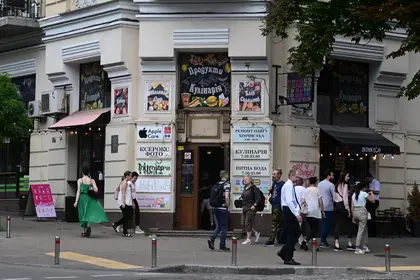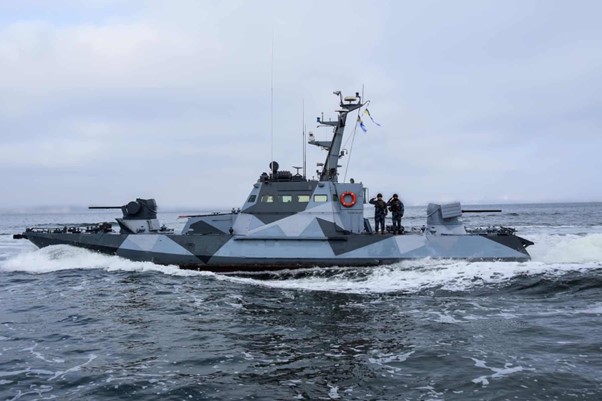By 2024, Ukraine's GDP will be 25% lower than it was before the war. This spectacular figure is primarily due to the occupation of 15% of Ukraine by the Russians (industrial territories that are now economically devastated) and to the decline in the working population, which stood at 18 million before the conflict.
Since the start of the war, the Ministry of Defense has announced that 700,000 people have been mobilized in the army, 100,000 in the police and 90,000 in border protection. The next mobilizations could involve another 500,000 people.
JOIN US ON TELEGRAM
Follow our coverage of the war on the @Kyivpost_official.
According to the United Nations, nearly 30,000 civilians have been killed outside the occupied territories (these figures do not include, for example, the Mariupol massacre). And some 8 million people, mainly women and the elderly, have left the country. However, the population is set to start rising again this year as more Ukrainians return home.
The challenge facing the Ukrainian economy is similar to its military challenge. The country's army must repel the Russian army with fewer men, less equipment and less ammunition. The country's economy must remain dynamic with less human capital. Companies have lost 10-20% of their workforce due to mobilization.
But the economy has to generate income to support Ukrainians, finance the war effort, repair the infrastructure destroyed by the Russians, and limit dependence on foreign financial aid, with few workers. A law on conscription was due to be debated in Parliament from January 11, in order to extend mobilization. It has been postponed indefinitely.

British Defence Intelligence Update Ukraine 27 January 2025
This was due to the direct financial costs involved, but also to the realization that increasing the number of people mobilized would be detrimental to economic growth, and therefore to the resources that could potentially be allocated to the war effort, in a context where Ukrainian public finances are more than fragile.
The IMF expects at least 3% growth this year, after 5% in 2023. The Ukrainian economy is holding up because people are working and businesses are showing a resilience that seems foolproof. Crédit Agricole Ukraine CEO Carlos de Cordoue points out that company accounts for 2023 show a "remarkable adaptation" thanks to "very strong energy and solidarity within and between companies".
As multinationals are forbidden to repatriate dividends to their home countries, their profits are placed with banks, giving the financial system great liquidity. Electricity works. Ukrainians have become so adept at protecting their network, repairing it and, if necessary, using generators, that the Russians have given up on the idea of cutting off electricity with missiles. The tech sector continues to grow, driven by the country's huge investments in cybersecurity and defense industries (drones in particular). Agricultural logistics are up and running, including for export.
Even though Russia withdrew from the grain agreement in July, Ukrainian grain exporters are moving along the Romanian, Bulgarian and Turkish coasts, supplying North Africa. Thanks to Ukrainian ingenuity, grain export volumes have almost returned to pre-war levels. In Kiev, despite the now almost daily missile attacks, stores are busy and restaurants are packed until 10.30pm, by which time customers and staff have gone home at midnight, the curfew hour. This quasi-normality of economic life in the capital (people going to work and to the factory, dynamic shops, urban traffic jams) contrasts with the extreme violence on the front.
Industrial production collapsed at the outbreak of war, but has now stabilized, albeit at a very low level. Some factories have managed to maintain a high level of business continuity, even in deteriorating circumstances. This is the case of Centravis, a world leader in steel tubes for the nuclear, coal and automotive engine industries, whose main plant is located in Nikopol, 6 km from the front line, regularly under artillery and drone fire. Its director, Frenchman Alexandre Joseph, explains that the factory's activity has never stopped.
Shelters have been built inside the factory. Profitability is in line with pre-war levels, and investment is increasing. It's a victory for Ukraine that this type of business is flourishing even though it's under constant threat from Russian fire. As proof of the resilience of the Ukrainian economy, the IMF forecasts that GDP per capita will return to its 2021 level by 2027. The country's investment rate is at its highest since 2018. Unemployment, although very high (20% of the working population), is falling, and inflation, at around 5%, is almost back to normal, and even slightly below wage growth, enabling purchasing power to start rising again.
The country's main economic problem is not business, but finance. The budget deficit has, unsurprisingly, reached a record level in 2023 at almost 30% of GDP (or around $50 billion), driven by military spending and internal security. International aid has been the main source of deficit financing since the start of the war. Of course, tax revenues are also on the rise, thanks to economic growth and the fight against corruption.
But even if the country's public debt remains reasonable (80% of GDP), it is nevertheless difficult to imagine Ukraine being able to finance its entire deficit over the next few years by appealing to the international financial markets. On the European side, the twenty-seven heads of state and government of the European Union reached agreement on Thursday on the payment of a further 50 billion euros in financial aid to Ukraine up to 2027.
The situation is more complex in the United States, where Donald Trump's closest allies in the House of Representatives do not want to hear about a new tranche of aid for Ukraine, much to the satisfaction of Vladimir Putin. One of Ukraine's main challenges in 2024 is to maintain a dynamic economy to finance a strong army. Its allies can help.
You can also highlight the text and press Ctrl + Enter










